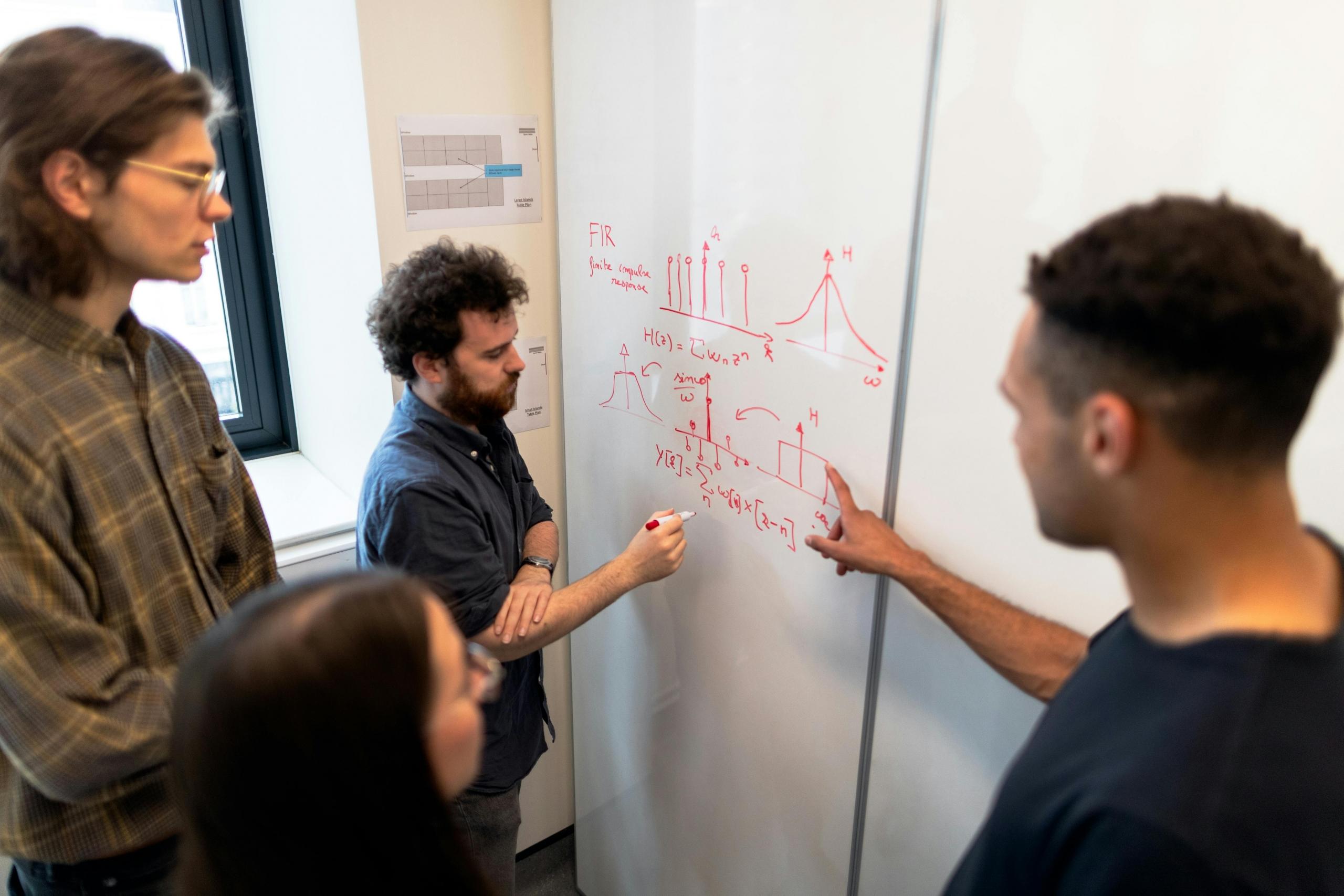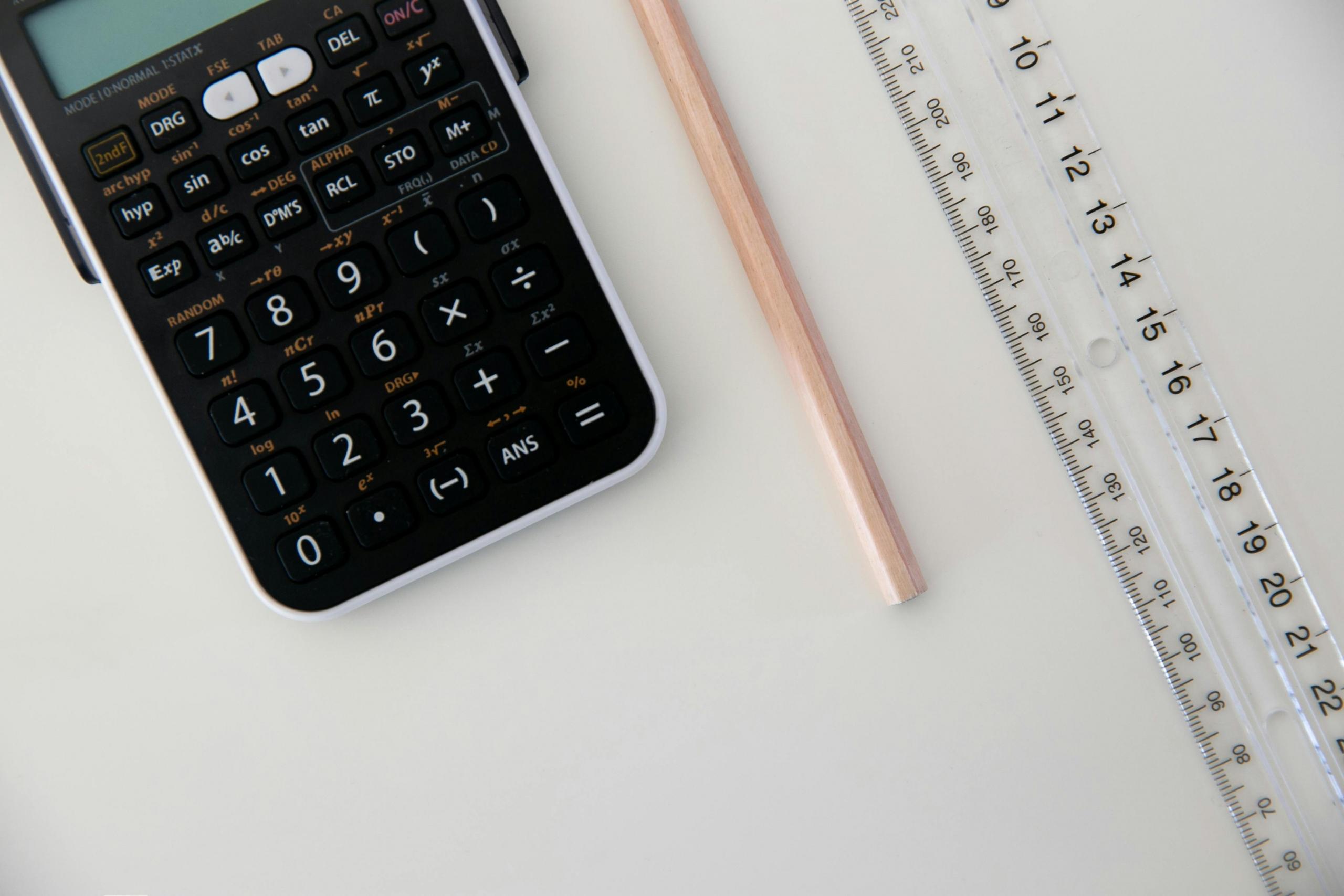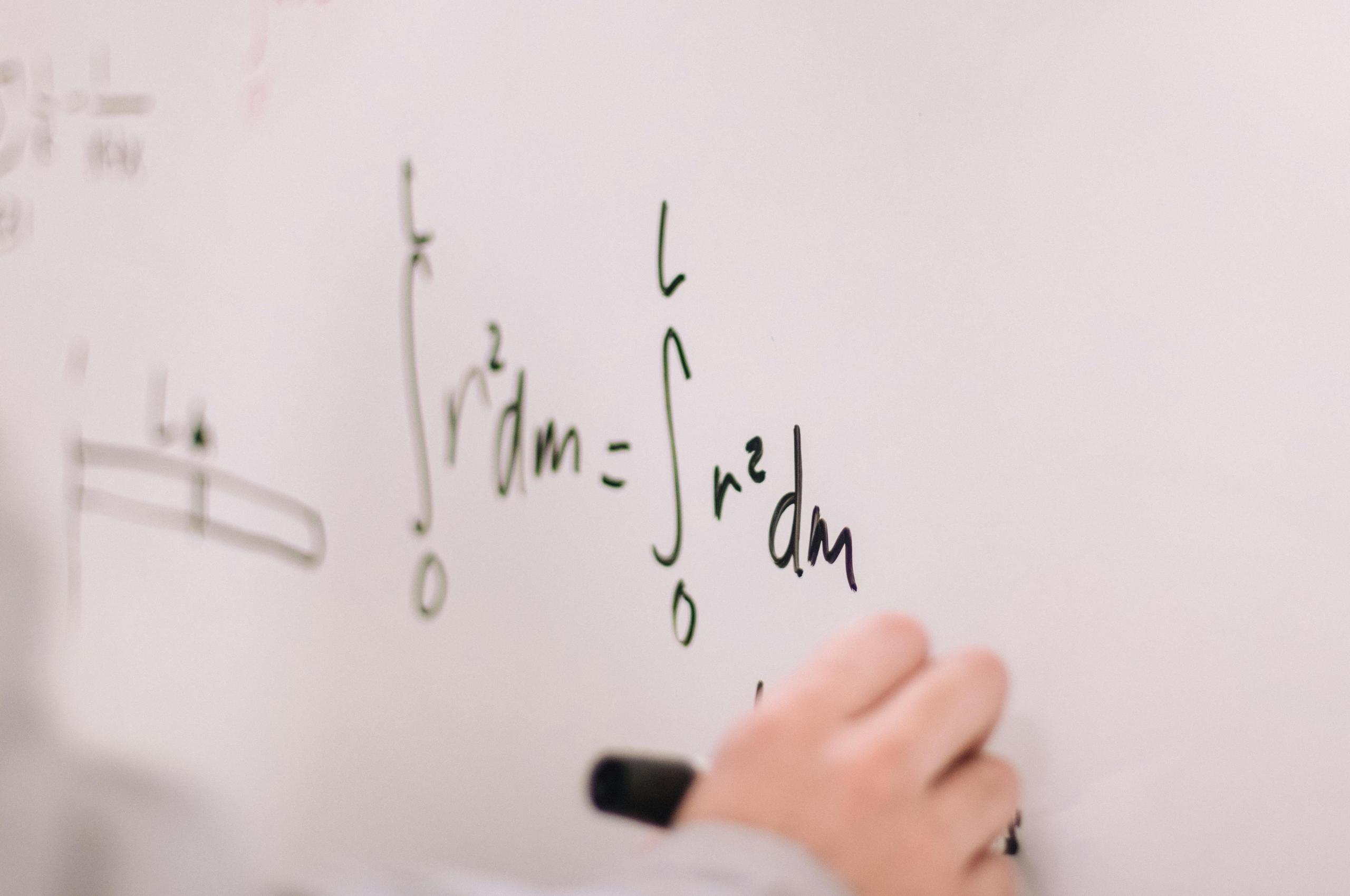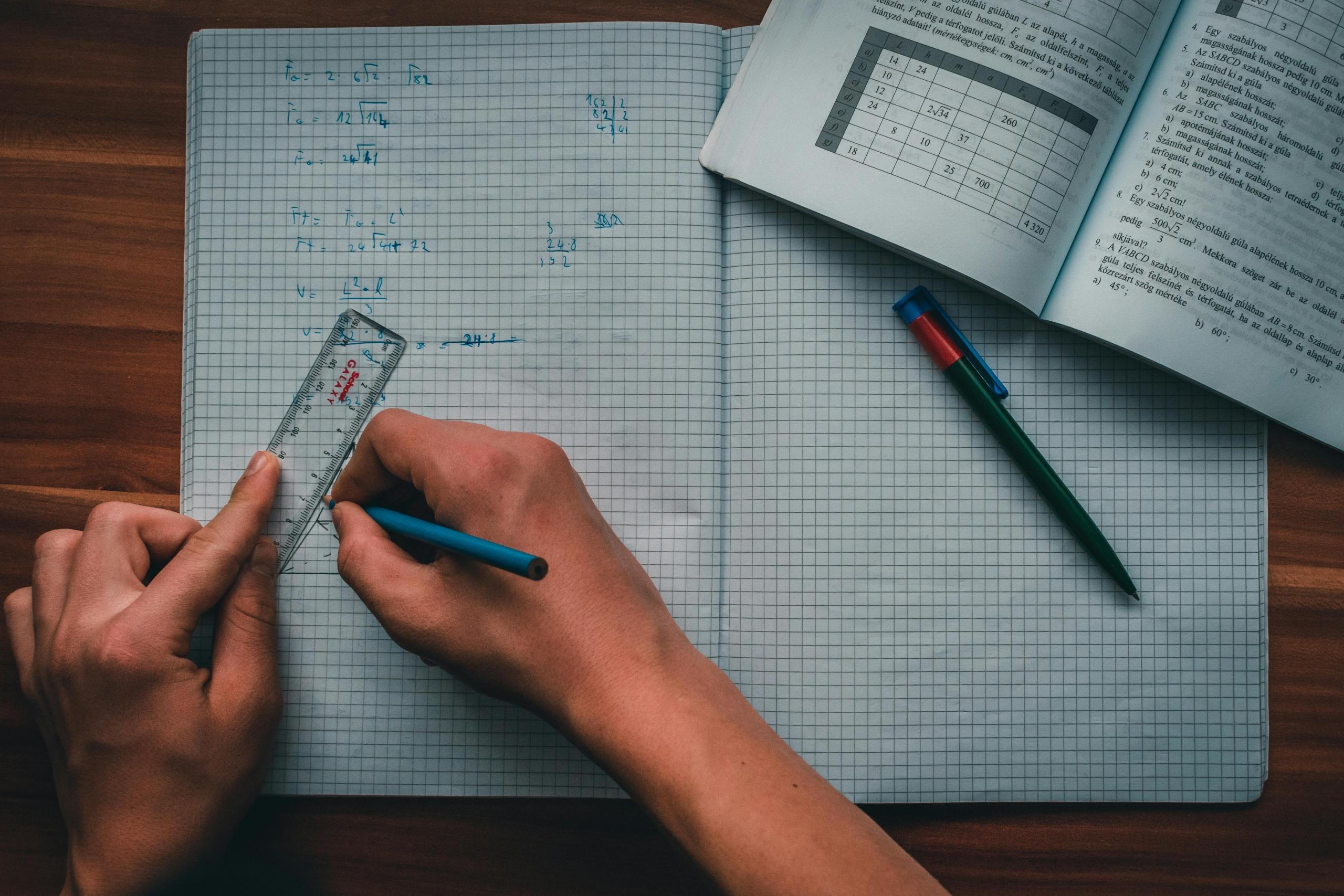While maths is considered by many to be one of the more challenging subjects covered across the GCSE course, by becoming familiar with the syllabus and the changes that are being made in 2025, you can put yourself ahead of the competition and secure a high grade.
We all have a unique set of strengths and weaknesses, and maths is no exception to this, but by putting in the work and getting a strong grasp of all the topics that feature on the curriculum, you will sail through any question that comes your way on exam day.
AQA is one of the principal exam boards for GCSE Maths in Britain and is taken by thousands of students across the United Kingdom.
The course for GCSE Maths is specifically designed to help fourteen to sixteen-year-olds (but is not limited to that age range with some older students taking GCSE education courses!) pass the national GCSE Exam based on the most up-to-date curriculum.
Our aim in this article is to walk you through the new components that will feature on this year's GCSE maths paper, the core topics that are examined and leave you with some actionable steps that you can employ in your preparation.
Hopefully, after you put this article down, you’ll find yourself with a sense of direction on how to get the grade you deserve in the subject!

New Components in the 2025 GCSE Maths Exam
Since the curriculum and the structure of the GCSE exam are always evolving, so too should your approach to learning. The 2025 GCSE Maths syllabus has been updated with several new elements to challenge students and promote a grasp of concepts.
One notable change is the emphasis on problem-solving and thinking skills. This shift means that students will face questions that require them to apply their knowledge in scenarios rather than simply memorising formulas or procedures.
You can expect more questions to provide you with real-life scenarios that encourage you to take the material you have covered in the maths class over the years and apply it practically.

It is worth knowing there is significant new content that will appear in both the Foundation and Higher-tier papers.
- Find the equation of a line through two points or through one point with a given gradient
- Recognise and use sequences of triangular, square and cube numbers, Fibonacci-type sequences, quadratic sequences and geometric sequences
- Calculate compound measures, including pressure in numerical and algebraic contexts
- Express a multiplicative relationship between two quantities as a ratio or a fraction.
- Write a ratio as a linear function
- Set up, solve and interpret growth and decay problems
- Use inequality notation to specify simple error intervals due to truncation or rounding Understand the≠ s symbol
- Use the standard convention for labelling sides and angles of polygons.
- Derive the sum of angles in a triangle
- Work with percentages greater than 100%
- Know the exact values of sin and cos for θ = 0°, 30°, 45°, 60° and 90°; know the exact value of tan for θ = 0°, 30°, 45° and 60°.
- Consider outliers when calculating the range of distribution.
- Know that correlation does not imply causation.
- Use Venn diagrams.
Being prepared to answer these questions will help you to achieve your potential in the subject, no matter what level you decide to sit. Each student must either take the higher or the foundation tier. They differ in content and grading. For the higher tier paper, your grade will be in the range 4 to 9.
Another addition that you will want to keep your eyes peeled for is the inclusion of algebraic fractions and surds in the curriculum. Students will be required to showcase an understanding of these topics particularly how to simplify and manipulate fractions effectively.
The syllabus now covers geometry topics, such as understanding and proving properties of shapes and solving problems related to circle theorems. By preparing some of the more commonly asked questions on this topic, you can give yourself an advantage over other students sitting the GCSE exam across the UK.
The number of students expected to sit the GCSE maths exam in 2025.
The maths course has also been adapted to equip students with skills that are becoming increasingly relied upon in the contemporary workplace.
The maths syllabus for 2025 incorporates technology with an increased emphasis on reasoning, requiring students to interpret and analyse data with scrutiny. These amendments will help students realise the practical application of maths and better prepare them for modern university courses and an evolving workplace.
You may also wish to speak to an online maths tutor who can offer you instructional advice on what they think is right for you in relation to how you learn and what they deem is a realistic outcome for you.
Here is a quick reminder of the grades you can achieve from one tier to the next.
| Foundation | Higher |
|---|---|
| Grades 1-5 | Grades 3-9 |
Check for Maths tutor York here on Superprof.
Expanding Further On The GCSE Syllabus
Now that you have a sense of what to expect in the 2025 GCSE maths syllabus, let's take a closer look at the topics that you will cover as you navigate the course throughout your years of schooling.
The GCSE Maths exam focuses on the practical side of mathematics. It tests the ability of a candidate to apply core mathematical concepts to solve mathematical problems derived from everyday life.
Number
The Number topic in the GCSE Maths Syllabus covers a wide range of essential concepts and skills that form the foundation of mathematical understanding.
This means that it is likely to feature in some way or another across your exam, whether it’s specifically asked for or not. Let's explore the key areas within this section so that you can begin jumping up a few grades in the subject:
Structure and Calculation
You'll explore maths functions like adding, subtracting, multiplying and dividing using them with numbers, decimals and fractions (both proper and improper, including mixed numbers).
One key learning that surfaces throughout this topic is understanding how different processes relate to each other, such as inverse operations, which make calculations and expressions a whole lot easier.
A private maths educator can be the answer to reaching your potential in your GCSEs and further education.

Fractions, Decimals and Percentages
Fractions ➗
A fraction represents a part of a whole
Example:
3/4 means three out of four equal parts.
Decimals ️⃣
A decimal is another way to represent fractions and parts of a whole.
Example:
0.75 is the decimal equivalent of 3/4.
Percentages %
A percentage is a fraction of 100. It is used to describe proportions and compare quantities.
Example:
75% means 75 out of 100, and it is equivalent to 75/100 or 0.75
This subsection focuses on the interrelationships between fractions, decimals, and percentages, as they represent different ways of expressing proportions.
You could be asked a question that appears to examine an entirely different topic, but being able to manipulate your answer into the required form is generally where students can jump from achieving a high partial to full credit in their answers.
Now, you should be beginning to see the importance of having a strong grasp of this section of the syllabus.
Measures and Accuracy
In this section, you'll learn about the units of measurement for weight, distance, time, currency, and other metrics, as well as combined measurements.
This section is important not only if your goal is to maximise your grade in the GCSE exams but also if you are relied upon throughout the A-level maths course and even at university!
This is because these measurements are frequently used when dealing with the rate of change under the topic of Calculus, so make sure to pay extra close attention to this topic when you cover it in your maths class.
Regardless of where you find yourself in the UK, a search such as Maths tutor Manchester over on the Superprof homepage will help you grasp these concepts.
Algebra
While Algebra is often a topic that is entirely new to students studying GCSE maths, there is certainly no getting around it, given how often it appears throughout the exam papers each year. Once you get your head around the mix of numbers and letters, it’s not all that bad!
You will learn to use and interpret algebraic notation, including understanding the meaning behind expressions like ab (representing a × b), 3y (representing y + y + y or 3 × y), and a^2 (representing a × a).
If algebra is something that you struggle with, then the above video provides great instructions on how to tackle basic algebraic equations. Throughout your classes at school, you will become familiar with coefficients written as fractions rather than decimals and the proper use of brackets.
You'll also learn to expand products of two or more binomials and factorise quadratic expressions of the form x^2 + bx + c, including the difference of two squares and expressions of the form ax^2 + bx + c. Setting up and solving simple equations such as two simultaneous equations to find any unknown variable is also an extremely crucial skill to learn.
Once you have this nailed down, you will want to start familiarising yourself with plotting graphs of equations and identifying parallel and perpendicular lines using the equation y = mx + c.

Ratio, Proportion and Rates of Change
Ratio ⚖️
A comparison of two quantities by division
Example: The ratio of 2 to 3 can be written as 2:3
Proportion 🔢
An equation stating that two ratios are equal
Example: If 4/8 = 1/2, then 4:8 is proportional to 1:2
Rates of Change ⏱️
The speed at which a variable changes over a specific period of time.
Example: Velocity is the rate of change of position with respect to time
In the section of GCSE Maths Syllabus that covers Ratio, Proportion and Rates of Change, you'll delve into a range of concepts and methods related to connections and changes in speed.
As we were saying earlier, you’ll see how measurements from the number topic also feature in this section of the syllabus. If you ask any maths teacher, they will likely tell you how this topic is a step up from some of the other examinable material across the course.
This doesn’t mean that you are at a disadvantage; in fact, the GCSE marking schemes often award more marks to students who make logical attempts to answer the exam questions. So make sure to include rough work and try to break down the questions into manageable steps!
You can expect to work with combined units like speed, wage rates and unit pricing while also comparing lengths, areas and volumes using ratio notation and scale factors. Don’t worry; once you start working through the topic, it will begin to make a lot more sense.
Geometry and Measures
Most GCSE students tend to take well to the geometry portion of the syllabus since it is easier to visualise. The topics also make for more engaging questions since the exam questions come with some interesting practical applications.
In the Geometry and Measurement section of the GCSE Math Syllabus, students will explore a variety of topics concerning shapes, sizes, and spatial properties. Key topics covered in this section encompass understanding the characteristics of shapes, calculating area, volume, and surface area, and honing skills in precise measurement and unit conversion.

The famous Pythagoras theorem, both in 2-D and 3-D, is included too. Planes, diagonals of a cuboid, trigonometric ratios of sine, cosine, and theta to find the angles between lines and a plane, angles of elevations, angles of depression and solving 2D and 3D problems are all very important parts of geometry.
One of the more challenging problems that you might want to brush up on is finding the perpendicular distance from a point to a line and applying knowledge of angles at a point on a line and vertically opposite angles.
Statistics
As you progress through to the later stage of the GCSE syllabus, you'll gain insights into statistics, such as presenting data and interpreting graphs. Along with creating representations, you'll also learn to analyse and evaluate existing ones.
Statistics are used to solve problems with the help of statistical analysis and the collection of data from several sources.
The discussion above details the key terms you will need to know before you sit your GCSE maths paper. Students also need to learn the following in order to master the statistics portion of GCSE Maths:
- Identifying the sources of bias and understanding how data relates to a certain problem and how the size of samples affects the conclusions
- They should be able to design a survey or an experiment and identify the type of data that needs to be collected and the format of the data. Their concepts of population and sample should be crystal clear and they should also consider fairness and be able to either design or criticise a questionnaire
- Their understanding should include the know-how of designing data-collection sheets which enable them to distinguish between different kinds of data
- Extracting data from lists and tables, using and designing two-way tables for both grouped data and discrete data, producing charts, diagrams, histograms, graphs, etc, for all kinds of data types and learning to find mean, median, mode, range, modal class is all part of very crucial topics in statistics.
Improve your maths grades with an A-level Maths tutor here on Superprof.
Probability
Probability is another favourite topic among students and teachers alike, as it offers some interesting real-world applications to help visualise and solve problems. If you flick through your school textbook, you’ll likely find a range of questions asking you to analyse the value of popular casino games or a series of coin tosses.
Learning the vocabulary of probability sets the basis for other key concepts in the subject. Students should learn to distinguish between unlikely, equally likely, even chance and impossible events and should be able to mark probabilities as well as events on a probability scale of either 0 or 1.
The key skills to learn probability is:
- Using estimates, measures of probability, relative frequency, theoretical models
- Finding the probability of successive events, for example, the toss of a coin or several throws of a dice.
The GCSE Maths course mentioned above is for both the foundation and higher tier, but the higher tier includes slightly advanced topics in addition to the ones mentioned above.

Secrets to Achieving a Top GCSE Maths Grade in 2025
Exam Strategy 📝
Distinguish between learning the syllabus and mastering exam techniques using past papers
Time Management ⏰
Allocate time effectively during exams by breaking down time per question based on marks available
Revision Resources 🧐
Use various learning resources and practice under exam conditions to maximize performance and confidence
One thing that you will want to learn sooner rather than later is that covering the GCSE syllabus in its entirety and maximising your performance in the exams are often two separate things.
While covering all of the topics that are featured in your school textbook will give you a good understanding of the concepts that you will be examined on, a few are of the complexity of the exam questions that tend to appear in the papers.
Your maths textbook is perhaps the best resource for introducing a new topic and progressively increasing the difficulty of the questions as you work through the chapters. But this means that there are limited questions on each topic that will help you become familiar with exam-level questions. It's also important to diversify your GCSE maths learning resources so that you can be sure that no stone is left unturned!
If you want to maximise the grade you receive in the subject when you get around to opening up your results envelope after the summer, then you will want to mix exam preparations into your preparation. The best way to do this is by working through past papers to get familiar with how the questions are likely to be asked so that there's nothing that can throw you off on the day.
Would you believe it if we told you that time management is actually one of the main things that hold students back from achieving their potential in the GCSE maths exam? You can have a strong grasp of all the topics across the maths GCSE syllabus, but if you fail to complete the paper in time, you'll miss out on a portion of the marks and cap the grade that you can achieve in the subject.
Make sure to manage your time in the exam hall by allocating a portion of time to complete each section. You will want to do this by breaking down the number of marks that are up for grabs in each question and giving yourself a proportionate amount of time to work through it.
You don't want to spend too much time trying to figure out a question that is only worth 5 marks when you could be working through a question that will have a greater impact on your grade.
By timing yourself working through past exam papers, you will become familiar with the exam setting and navigate the paper under the same conditions that you will be under when the date approaches.
Adopting an exam-focused approach while you work through the GCSE syllabus is the best way to ensure you get a good grade if not a prestigious 9! Don't wait any longer, get stuck into maths right now! Find a maths tutor for A-level maths and GCSE Maths revision, and see how your confidence grows by leaps and bounds.
















Thank you very much.
This guide has helped me a lot
Thank you very much
Thank you very much
now that called communication with simplicity. thanks an million its a relief to read this in simple language
Hi does this guide cover all the topics that will definitely be in the test?
Hi,
Thank you for your question! While this guide covers key topics commonly found on the test, it’s important to note that exams can vary and changes can be made to the curriculum. I recommend checking with your official examination board regularly to ensure you’re prepared for all possible topics.
Best of luck with your studies!
ok my examination board is AQA
Thank you for sharing that your examination board is AQA. The AQA GCSE Maths syllabus encompasses a range of topics, including number operations, algebra, ratio, proportion, rates of change, geometry, measures, statistics, and probability.